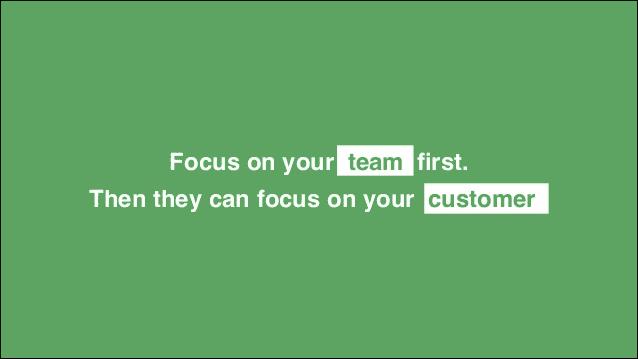Coding Culture: Building & Reinforcing Your Company Values

By Abby Sorensen, Editor

I can count on one hand how many times I’ve asked a software executive why his or her company is successful and the answer has not somehow related to culture. But I’ve yet to meet a software company claiming its culture and its employees are 100 percent aligned, or even close to it. When a software company credits increasing revenue, decreasing churn, and deploying updates faster “because our employees are the greatest, and they love working here,” it’s getting harder and harder for me to take that at face value. “Culture” can’t be every software company’s secret sauce, right?
Companies care so much about culture that an entire technology category has been built around it. Capterra, an online software review platform, lists multiple types of software designed to improve culture – things like “Employee Engagement Software,” and “360 Degree Feedback Software,” and “Employee Recognition Software.” Those categories, respectively, list 204, 121, and 80 different software products. And the 2017 HR Technology Conference had 72 exhibitors in the “Engagement and Recognition” category this year. Even assuming some product overlap, just consider how many products are on the market today claiming to offer a silver bullet for improving culture.
Here are some example descriptions of these software products:
- “...platform to help you improve employee engagement, express your culture, and make communication happen.”
- “...solution to help companies measure, understand, and strengthen their company culture through ongoing employee feedback.”
- “...cloud-based platform for leaders to improve the culture of their organization through engagement and recognition.”
Well I have news for all software entrepreneurs, executives, and leaders – you can’t code your way to a strong company culture. There isn’t an app for that. I mean no disrespect to software vendors who have clearly recognized a growing demand for these products. But if you need a piece of software to remind you to recognize your employees, then you need a lot more help than you realize.
When I sat in the audience at the Business Of Software conference in September 2017, I watched speaker after speaker give real-world examples of how they continue to build their culture. So instead of giving my stamp of approval to any one culture/employee engagement/employee recognition software solution, allow me to share some of those examples with you. These founders don’t use apps and spreadsheets to make their company a place where people want to work.
Jason Cohen – Founder and CTO, WP Engine
Cohen took a quick audience poll in the middle of his talk. He asked, “How many of you have taken too long to fire an employee?” Almost every hand went up. He then asked, “How many of you have fired someone too soon?” Only one brave hand went up. The “hire slow, fire fast” mantra is popular for a reason. If you have an employee, or employees, who are substantially impacting your culture in a negative way, it might be time to part ways. Yes, we all know talent is hard to find, and that the unemployment rate for skilled engineers and enterprise sales reps is close to zero. No, this doesn’t give leaders and excuse to let a single person or a small number of people force more talented people out of your company.
Natalie Nagele – Co-founder and CEO, Wildbit
Nagele put up one of my favorite slides of the entire event. During her talk, she called out the limited framework for positioning a software company – you’re a startup, a lifestyle business, or a unicorn. Her slide with the words “regular business,” and her explanation of Wildbit’s desire to be just that, got a round of applause. If your company is focused on hyper growth just for the sake of growth, this is going to wear on your culture, not just founders. Regardless of your long-term strategy, your employees need to know it in order to support it.
When Nagele and her husband Chris, Wildbit co-founder and CTO, started focusing on culture, they were careful not to get weighed down by policies. This meant intentionally asking each employee what work is fulfilling. She said, “If you take care of your people and your team, the revenue will follow.” This means providing the right environment for your team to take care of your customers, which she says is more important than the product itself. At Wildbit, that environment includes private offices conducive for focused work, and an annual retreat to bring all of its in-office and remote employees together to discuss culture and company direction.

You can view Wildbit’s “rules that shape how we work and live” on their website, https://wildbit.com/.
Bridget Harris – Co-founder and CEO, YouCanBookMe.com
Harris gave a talk about hiring, but it was really about building and protecting your culture when you do hire. The company has a culture deck she shares will all prospective employees. It’s short and to the point with six values and behaviors (you can view YouCanBookMe’s culture deck here).
The point here is that culture isn’t something you can start imparting on an employee after that employee is onboarded. Your culture needs to be as clear in your hiring process as it is in your daily office routine. Once YouCanBookMe employees are hired, Harris relies on 360 degree feedback. She knows employees can cooperate with managers and executives, but that doesn’t necessarily mean their coworkers enjoy working with them. Those often hidden tensions can quickly ruin a culture.
Giacomo “Peldi” Guilizzoni – Founder and CEO, Balsamiq
Like Wildbit, Guilizzoni also believes in the power of company-wide retreats. This is especially important since 100 percent of its employees work remotely. At first Balsamiq would use these retreats to solve its biggest business challenges of the year, and he quickly realized that was a mistake. Now the retreats are entirely focused on building culture. This model doesn’t scale for large companies (Balsamiq and Wildbit each have around 30 employees), but that doesn’t mean teams and departments within large companies can’t hold offsites or set aside blocks of time to talk about shared values.
These are firsthand accounts from people whose life work is spent building a culture within software companies. So you’ll have to indulge me when I offer my own culture-boosting advice, even though I don’t work for a software company. I recently posted a picture on LinkedIn of a pile of cell phones, and it’s nearing 8,000 views (viral by my fairly low standards – you can view the post here). The college golf team I help coach isn’t allowed to have phones at team meals, practices, van rides, or meetings. At our last tournament of the season, a pile of a dozen phones magically appeared in front of me at a team dinner without the coaching staff having to ask. When recruits ask me about our team culture – and all of them ask this at some point in the recruiting process, just like every candidate you interview will likely ask about your corporate culture – this is the example I give. Our team enjoys each other’s company so much that their coaches don’t have to demand these 18-to-21 year olds give up their precious phones. They unplug willingly. If these college kids can sacrifice their phones for an hour or two, so can everyone in your office. Ask for a phone pile when you walk in to your next meeting, or start a video conference with remote workers by asking everyone to put their phones out of reach. Consider the irony of it – an entire industry of culture building technology has sprung up, and you’ll be powering down technology in order to improve your culture.
